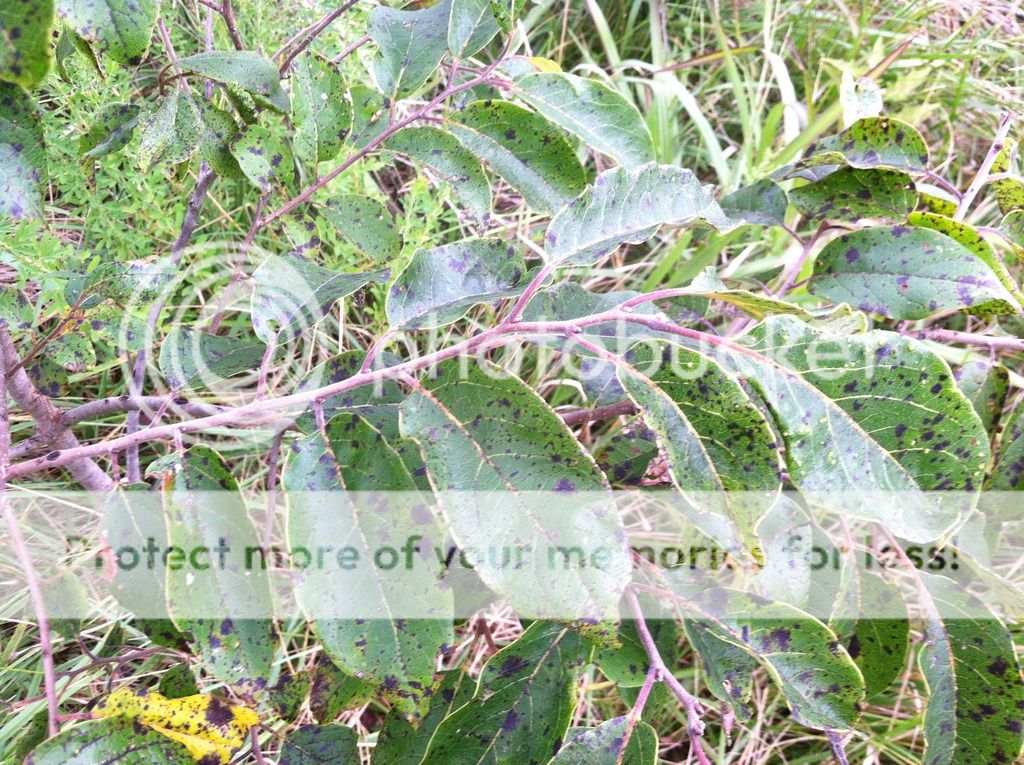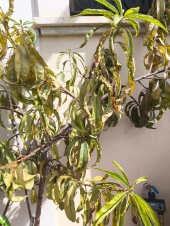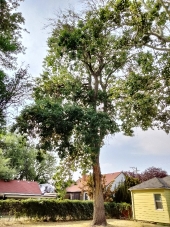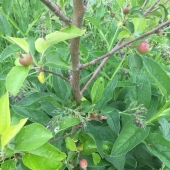posted 10 years ago
With out photos, it certainly sounds like Black Spot, a disease usually thought of to be found only on roses, but it just isn't so.
Black spot (Diplocarpon rosae) can attack any fleshy leaves and or stems when conditions are right. It could also be Anthracnose which I will talk about after the Diplocarpon rosae.
Getting rid of black leaf spot must be a two-pronged attack.
Because its spores travel on the wind and plash from leaf to leaf during watering, treating black leaf spot should be first on your agenda.
There are several good fungicides on the market, several of which claim to be organic.
They come in handy bottle sprayers, but if your garden is large, you might want to buy it as a concentrate to mix in your tank sprayer. I consider this the last ditch approach, since I hate to have to use any sprays of this type before trying other things.
Neem oil is an acceptable alternative for treating black leaf spot.
It’s an oil pressed from an evergreen tree.
It’s all natural and has shown some remarkable results as an effective garden fungicide.
For those of you who prefer Grandma’s solutions to garden problems,
try this: Mix one heaping tablespoon of bicarbonate of soda (baking soda) into a gallon of water for your sprayer.
Add a dash of horticultural oil or horticultural soap and Voila!
You have a method of treating black leaf spot that works by changing the pH on the leaf surface to one the fungus can’t survive.
The oil or soap makes the solution stick and the cost is around four cents a gallon.
The next step in getting rid of black leaf spot is prevention and maintenance.
Inspect your garden regularly in the spring.
Black spots on plant tissues will spread quickly.
Start preventative spraying before the temperatures hit sixty.
Read the label directions for the method you choose and follow it closely.
For Grandma’s recipe, a light weekly dose should be sufficient.
Continue spraying until temperatures are hot enough to get rid of black spot fungus without.
Avoid watering your plants on cloudy days.
Bright sun and good air circulation are essential for getting rid of black leaf spot.
During an outbreak, all affected debris should be disposed of.
It may not be ideal as far as looks go, but affected plants should be cut back, and in the fall every bit of garden debris should be bagged and thrown away or burned.
The spores can overwinter on plant material, but can’t survive in bare soil.
The good news is that black spot fungus rarely kills the host plant.
Getting rid of black leaf spot takes a lot of diligence, but in the end, the rewards are worth it.
Anthracnose diseases of hardwood trees are widespread throughout the Eastern United States.
The most common symptom of these diseases is dead areas or blotches on the leaves.
Because of the brown and black, scorched appearance of the leaves, the diseases are sometimes called leaf blight.
The symptoms vary somewhat, depending on the host. Under certain conditions, the whole leaf dies and falls prematurely.
On some tree species, the diseases may also damage twigs, shoots, buds, and fruits.
Repeated defoliation reduces growth, weakens the tree, and increases its susceptibility to attack by other pests and to winter injury.
These diseases are caused by several closely related fungi, plants that reproduce by means of spores - the fungal equivalent of seeds.
Spores spread the disease when moved by wind, rain, or mechanical means from one host to another.
Anthracnose fungi attack numerous hardwood species, including ash, basswood, birch, catalpa, elm, hickory, horsechestnut, London planetree, maple, oak, sycamore, tuliptree, and walnut.
Although anthracnose diseases have been found wherever these trees grow, not all hardwoods are equally affected.
The diseases are particularly severe on American sycamore, white oak and other oaks in the white oak group, and black walnut.
Sometimes, these species are almost completely defoliated; and on black walnut, nut production is affected.
Infections are frequently found on other oak species, including scarlet, black, red, and southern red oaks; but the red oaks appear to be less susceptible than the white oaks.
Pin oak, swamp chestnut oak, bur oak, and London planetree are only occasionally infected by the fungi.
Symptoms on infected leaves range from tiny dead spots to large circular or irregular dead blotches, depending on the tree species.
Dead areas are black, brown, or purple. On sycamore (cover photo) and maple, infected areas are often found along the veins and midrib of the leaf.
The dead areas may merge until the whole leaf dies.
Infection in the early spring may turn the leaves black so that they resemble leaves damaged by frost.
If they are not killed by the fungi, young leaves may become distorted by the unequal growth in healthy and infected parts. Distorted leaves are common on oaks.
When severely infected, trees may lose their leaves.
But if defoliation occurs in spring or early summer, a tree will usually produce a second crop of leaves.
Control can be done with Bordeaux spray. I like to start with the application of a complete fertilizer, such as 12-12-12. This will improve the vigor of trees weakened by repeated attacks of anthracnose.
Some species are less affected.
London planetree is much less susceptible than American sycamore; oaks in the red oak group are generally more resistant than white oaks.
If you take some of the affected leaves to your local County Extension Office, they should be able to identify the problem and offer suggestions for treatment.






































 and I doubt I'll be able to get the brush cutter down that far this year.
and I doubt I'll be able to get the brush cutter down that far this year.


























